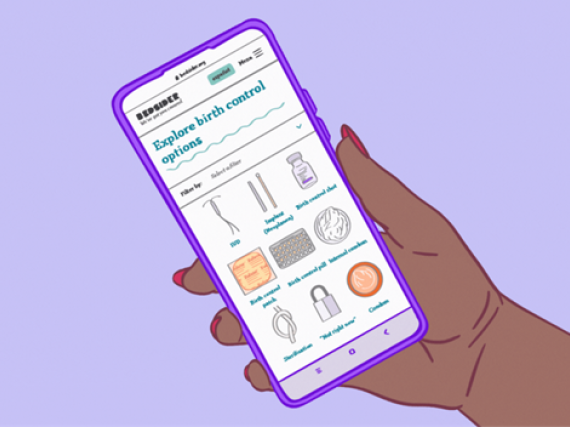Breastfeeding as Birth Control? The Benefits of Using Dual Methods
In honor of National Breastfeeding Awareness Month, we wanted to take a closer look at the relationship between breastfeeding and birth control. While many of you are familiar with the benefits of breastfeeding, you may not know that it also can be a form of birth control—but only if performed in a certain and specific way. Known as the lactational amenorrhea method (LAM), it refers to the infertility period during the first six months of postpartum associated with breastfeeding. When babies nurse, a hormone called prolactin is triggered to ensure an ongoing milk supply for the baby while simultaneously suppressing other hormones, including ones that trigger ovulation. If you are nursing and feeding your baby only breast milk, your body naturally stops ovulating. When ovulation ceases, so does menstruation, which in turn results in a short window of time in which women are infertile.
While this sounds great on paper, the LAM birth control method is actually 98% effective only if performed perfectly. By perfectly, we mean that it has been less than six months since you gave birth, you are only nursing (no bottles, formula, or food), and your period has not started again. Reliance or “overreliance” on breastfeeding as the sole method of contraception is the most cited reason for experiencing unintended pregnancy during breastfeeding.
Given the potential pitfalls associated with the prerequisites to accurately perform LAM, many medical professionals encourage nursing mothers to consider dual methods of contraception. In a recent study, researchers assessed the use of emergency contraceptive (EC) pills as a secondary method of birth control for women practicing LAM in Egypt. Using a two-arm randomized control trial, the researchers enrolled women who intended to breastfeed and postpone pregnancy for at least one year. Of the 1,158 women who fit the screening criteria, all received counseling about LAM; however, nearly half also received counseling about EC in case they havd sexual intercourse after the expiration of one of the three LAM prerequisites.
In their analysis, the researchers found that provisions of EC pills at the time of postpartum contraception counseling were an effective dual method of birth control in preventing unplanned pregnancies. More specifically, pregnancy occurred in 5% of the group only practicing the LAM method, while pregnancy occurred in 0.8% of the group practicing LAM and also using EC.
In addition to the decreased rates of unplanned pregnancy among the group of women using both EC and LAM, the researchers found that significantly more women in the dual contraception group started a new birth control method within or shortly after the six-month timeframe in which LAM is no longer effective.
Ultimately, this research lends credence to the importance of dual methods of contraception, especially among new mothers practicing LAM. Find the best breastfeeding-friendly birth control method here.



